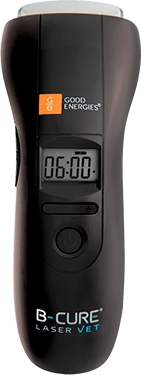Navigating Life with a Dog Recovering from Bell’s Palsy: Building a Stronger Bond
As devoted pet owners, we share an unbreakable bond with our canine companions. When our beloved dogs face health challenges like Bell’s Palsy, a condition that affects facial muscles and nerves, it can be emotionally overwhelming for both the pet and the owner.
However, this difficult journey can also present an opportunity to strengthen the bond between the two. In this blog, we will explore the emotional aspect of caring for a dog with Bell’s Palsy, offer advice on fostering a positive environment, and ensure that our furry friends feel loved and supported throughout their recovery journey.
While traditional treatments like medications and physiotherapy are essential for healing, the power of love, care, and understanding cannot be underestimated.
Understanding Bell’s Palsy in Dogs
Bell’s Palsy is a neurological condition characterized by the sudden weakness or paralysis of facial muscles in dogs. While the exact cause is often unknown, it is believed to result from inflammation or damage to the facial nerve. Common symptoms include drooping of one side of the face, difficulty closing the eye on the affected side, and changes in ear position. It is essential to consult a veterinarian for an accurate diagnosis and to rule out other potential underlying causes.
The Emotional Impact on Pet Owners
Learning that our loyal furry companion is facing Bell’s Palsy can be a distressing experience for pet owners. The sight of their once vibrant and expressive face now showing signs of weakness can tug at the heartstrings. Feelings of helplessness, concern, and fear for their well-being are entirely natural during this time. However, it is crucial to remember that dogs are incredibly resilient animals, and with the right care and support, they can recover and lead fulfilling lives.
Building a Stronger Bond
- Educate Yourself about Bell’s Palsy
Understanding the condition is the first step in providing the best care for your dog. Educate yourself about Bell’s Palsy in dogs, including its symptoms, possible causes, and recommended treatment options. This knowledge will empower you to make informed decisions and communicate effectively with your veterinarian.
- Be Patient and Understanding
Recovery from Bell’s Palsy can be gradual, and it is essential to be patient and understanding during this time. Your dog may experience frustration or discomfort due to their condition, so offer them reassurance and comfort. Speak to them in soothing tones and avoid any sudden loud noises that might startle them.
- Create a Calm and Supportive Environment
Fostering a calm and supportive environment is crucial for your dog’s emotional well-being. Designate a quiet and comfortable space where they can rest and recover without unnecessary disruptions. Providing them with their favorite toys, blankets, and familiar scents can help ease any anxiety they might feel.
- Maintain a Routine
Dogs thrive on routines, and maintaining a structured schedule can help them feel secure during their recovery. Stick to regular mealtimes, walks, and play sessions, adapting them as needed to accommodate their condition. A consistent routine will also aid in their recovery process and provide a sense of normalcy.
- Encourage Gentle Interaction
Positive and gentle interactions are essential for nurturing the bond with your dog. Spend quality time together, engaging in activities they enjoy that do not put a strain on their facial muscles. Gentle massages and soft strokes can be soothing and comforting for your furry friend.
- Monitor Progress and Celebrate Milestones
Keep track of your dog’s progress and celebrate even the smallest achievements. Whether it’s a slight improvement in facial movement or more comfortable sleep, each milestone is a step closer to recovery. Praising and rewarding your dog for their efforts will encourage their spirits and motivate them during the healing process.
- Incorporate B-Cure Laser Therapy for Support
In addition to traditional treatments, consider incorporating the B-Cure Laser, available on Amazon, as a supportive therapy for your dog’s Bell’s Palsy recovery. The non-invasive and painless nature of low-level laser therapy can aid in reducing inflammation and promoting tissue repair, potentially speeding up the healing process. Always consult with your veterinarian before starting any new treatment.
Conclusion
Caring for a dog recovering from Bell’s Palsy is a journey that requires compassion, patience, and understanding. As pet owners, we play a crucial role in creating a positive and loving environment that supports our furry friends through their recovery.
By educating ourselves about Bell’s Palsy, maintaining routines, and providing gentle care, we can strengthen the bond with our dogs during this challenging time. The power of love and dedication, along with the assistance of innovative therapies like the B-Cure Laser, can make a significant difference in our dog’s journey to a full and happy recovery.
Remember to cherish every moment and offer unwavering support, for our dogs truly deserve all the love and care we can give.




